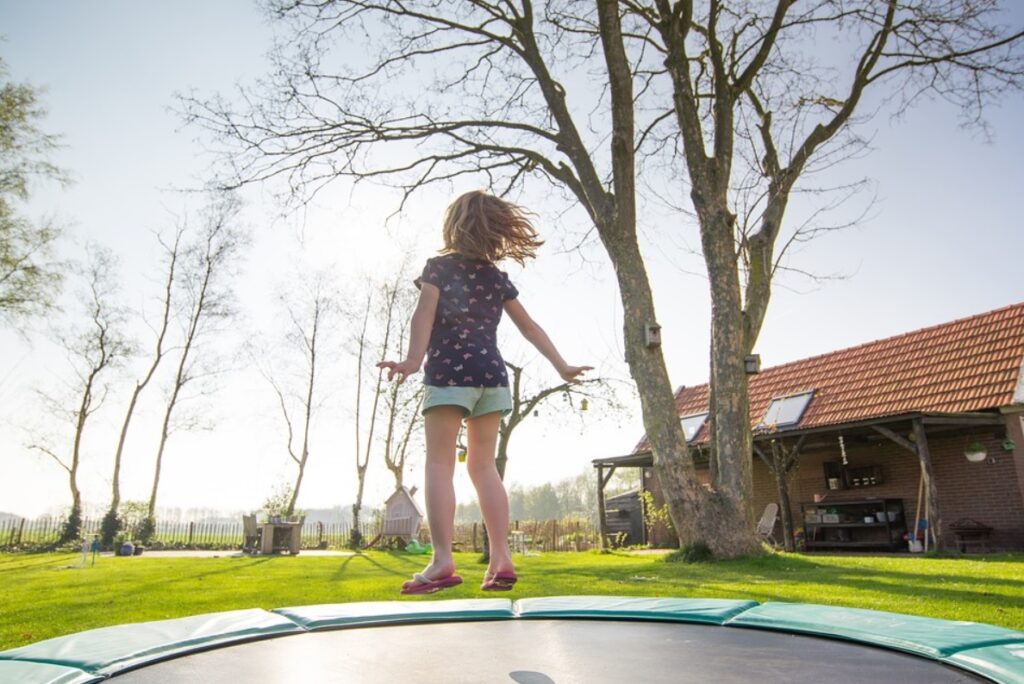Today’s activity centers are still generating the same buzz as their pioneering predecessors. You probably remember this not-so-perfect tool for toddlers getting mixed reviews when it first came out. Caregivers usually gave them the thumbs up, while many pediatric therapists weren’t happy with their structure.
Fast forward to today, and it seems the caregivers were right to give the activity center a chance. Still, the question in many parents’ minds is: when exactly do we give them a chance? At what age should you allow your child to get in the baby jumper? We’ll find that out today.
At What Age Can a Baby Use an Activity Center?
First of all, a stationary jumper or activity center should be situated in a secure and level area to ensure maximum safety for your little one. Children should also be at an age when they have the muscle control to hold up their own heads before using this tool. This “sweet spot” is known as the “resting muscle tone,” which occurs on a child’s torso, signaling their control over the upright position.
To put this in terms of age, we are talking between four and nine months because under four months is usually a deal-breaker where stationary jumpers are concerned. That tone in a child’s torso just won’t be mature enough at this age to support their upper body, which can lead to tons of potential dangers when you place your child in an activity center.
Now, beyond nine months is another story since children tend to cruise physically at this age and could have no use for the activity center any longer. The products then start to lose their allure for parents.
Another type of activity center, the doorway jumper, is something most babies won’t be ready for until they turn six months. Of course, an exception can be made for babies who develop earlier.
Lastly, there’s the weight requirement. Generally, these products don’t allow babies any heavier than 25 pounds to go on the tool. The child mustn’t also be able to climb or walk out of the item on their own.
Activity Center Safety
When it comes to our children, no one will argue that safety is the number one priority. And there’s a particular emphasis on safety for activity centers, as they’re mostly accepted as hand-me-downs due to their hefty price tag.
If this becomes your path to acquiring one, make sure to get an item that hasn’t been recalled. The jumper’s parts should all be there and in good working order so you can assemble it properly. You simply can’t have your second-hand find collapsing out of nowhere.

A hand-me-down’s stability could be in question, so make sure to check for that next. You also don’t want any pieces to come loose since these could easily become choking hazards.
The caveat for activity centers is they can come in the form of walkers with wheels, which are ill-advised for children you cannot supervise 24/7. There is too high a risk for falling and other injuries with these models.
Dozing off on these wheeled centers can be even more dangerous for your little ones. You just don’t know where they can end up rolling your babies to. When your youngster looks like they’re about to visit the sandman, transfer them to a safe and stable sleeping area, like a crib or a bassinet.
Thus, so much of safety lies in your hands, especially since you know your child’s sleep cues better than anyone. A child dozing off in any type of activity center is a big no-no. In fact, it could even be worse than children falling asleep in their car seats.
How Should You Leave Your Child in a Bouncer?
An activity center should never be considered a stand-in for a babysitter, so make sure to watch over your kids the whole time they’re using it. No matter how much manufacturers claim their products to be safe, that’s never an excuse to forego close monitoring.
You should place activity centers in a clear, open, and level space. Your child should never be left unattended, and nothing he or she could potentially choke on should be within reach. That means situating the tool away from areas with cords or loose items. You especially don’t want to leave your kids in these things in the kitchen.
Should You Use an Activity Center?
Despite the controversy surrounding certain kinds of activity centers, you shouldn’t lump them all in under a single negative category. Many jumpers are educational and buy you some time to take on other tasks while watching over your little one.
Remember to never leave your youngsters unattended in these things. Even if you’re doing something else, you should still make sure your child is in the same room and within sight. The bouncer shouldn’t also be anywhere near an area potentially dangerous for your little one.
Article edited and fact-checked by our editorial team.
References
- Shields BJ, Smith GA. Success in the prevention of infant walker-related injuries: an analysis of national data, 1990-2001. Pediatrics. 2006 Mar;117(3):e452-9. doi: 10.1542/peds.2005-1916. PMID: 16510623.
- Alkon A, Rose R, Hazard K, Moser D. National Health and Safety Standards: Family Child Care Homes Compared With Child Care Centers. J Pediatr Health Care. 2021 Jan-Feb;35(1):5-15. doi: 10.1016/j.pedhc.2020.03.004. Epub 2020 May 29. PMID: 32482397; PMCID: PMC7704798.
- O’Connor MA, Boyle WE Jr, O’ Connor GT, Letellier R. Self-reported safety practices in child care facilities. Am J Prev Med. 1992 Jan-Feb;8(1):14-8. PMID: 1575995.
